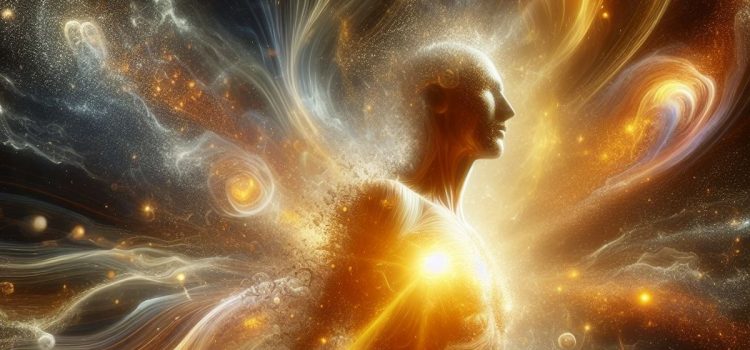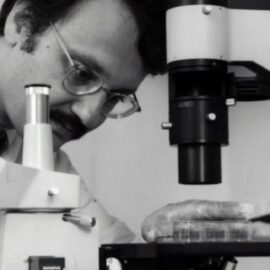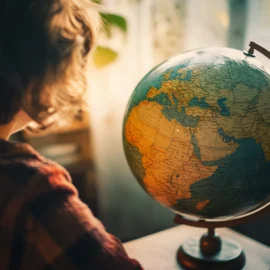
How does reincarnation work? How’s it related to karma? How can the cycle of reincarnation be broken?
According to Sadhguru, reincarnation happens when karma pushes a certain life energy that had inhabited one body into a new body. He argues that your goal should be to break out of the cycle of reincarnation and become one with the universe.
Read more to learn about Sadhguru’s concept of reincarnation and how to free yourself from the cycle.
How Reincarnation Works
Sadhguru states that, unlike Western views of heaven and hell, karmic afterlife experiences don’t last forever. Eventually, the dead person finds and inhabits a body that’s about to be born. They sense what various lives have to offer, then choose—on instincts established by karma—the one they think will give them what they desire most. According to Sadhguru, reincarnation works like this: Enduring karmic patterns push a “self” of conscious life energy from body to body.
(Shortform note: Sadhguru is less specific in his description of karmic afterlife experiences than other Eastern experts. Many branches of Hinduism and Buddhism teach about a plurality of “heaven realms” and “hell realms.” Hindus believe in seven heavens and seven hells, each characterized by its inhabitants’ level of ignorance or enlightenment. Buddhists believe in 31 realms of existence—25 heavens and six hells. Some of these six hells, or the “realms of desire,” are extremely different from the Western idea of hell. For instance, the world we’re living in now is one of the six hell realms of desire, as is the “Deva realm,” where godlike beings live in luxury but must eventually suffer the pain of death.)
| A Deeper Look Into the Bardo When recounting what happens to people after they die, Sadhguru is describing what Buddhists call the bardo—the intermediate stage between death and rebirth. This vision of the bardo was originally recorded in the Bardo Thodol, also known as The Tibetan Book of the Dead. People discovered and spread this book in 14th-century Tibet, but it’s said to have been written by a Buddhist mystic about 600 years earlier. The Tibetan Book of the Dead describes the bardo as a slightly more complex process than what Sadhguru describes here. It states that the bardo proceeds in three stages: First, dead people encounter the “clear light.” This is a bright, uniform force that dissolves all attachments. In this stage, dead people have the chance to identify with the clear light and recognize that they’re encountering their true nature. However, most people fail to do this, instead responding with fear and confusion. People who fail to unite with the clear light then enter the second stage of the bardo, where they encounter strange beings. These entities appear to be angel- or demon-like creatures, but the Bardo Thodol asserts that they’re just projections of the dead individual’s mind. This is one way that the karma from your life shapes your afterlife experience, as Sadhguru claims—your karmic tendencies determine how these deities look and behave. Because these deities are just aspects of the self, there’s no reason to be afraid of them. However, most people are still fearful and confused, prompting the third stage of the bardo. The dead person seeks refuge in what appear to be soft lights but turn out to be bodies about to be born. Sadhguru asserts that your karma will push you toward the life you desire most. The Bardo Thodol colorfully illustrates this process: The dead person witnesses a multitude of different couples having sex and chooses which couple they want to have as parents (or, if they lack awareness, they try to join in on the sexual act and accidentally get reincarnated instead). In the end, the dead person enters a new body and continues the cycle of death and rebirth. |
Breaking the Cycle of Reincarnation
Sadhguru contends that your ultimate goal should be to die without any attachment or desire for anything another physical life could give you. If you do this successfully, you won’t be reincarnated at all. The karmic influences pushing you around will have vanished, leaving you as a body of pure consciousness energy. There will be no more “you” left to identify with a separate self—instead, you’ll be at one with the universe, a seamless whole. This is a divinely euphoric experience. According to Sadhguru, every being craves the end of their individual self even if they don’t consciously realize it.
Sadhguru explains that, when you’re mindful of the nature of life and your immediate experience, you’ll realize that there’s nothing more you need. Once you make this state of mind a habit, you’ll have no trouble maintaining it through death, no matter how and when you die. Thus, you’ll break the cycle of reincarnation.
In your attempt to break the cycle of reincarnation, Sadhguru recommends surrendering as much of your individuality as you can at the time of your death. Specifically, make sure that there are no photographs or other items that remind you of your worldly life in the place you’ve chosen to die. Likewise, Sadhguru recommends dying alone, rather than being surrounded by loved ones. If you focus on the faces of your closest friends and family while you’re dying, it’ll strengthen the attachments to your illusory self that you’re trying to break.







Sadhguru, I need your answer to something important.
When a person dies, will he or she be reincarnated in human or animal form based on his or her Karma?
Dwarka